Family heirlooms
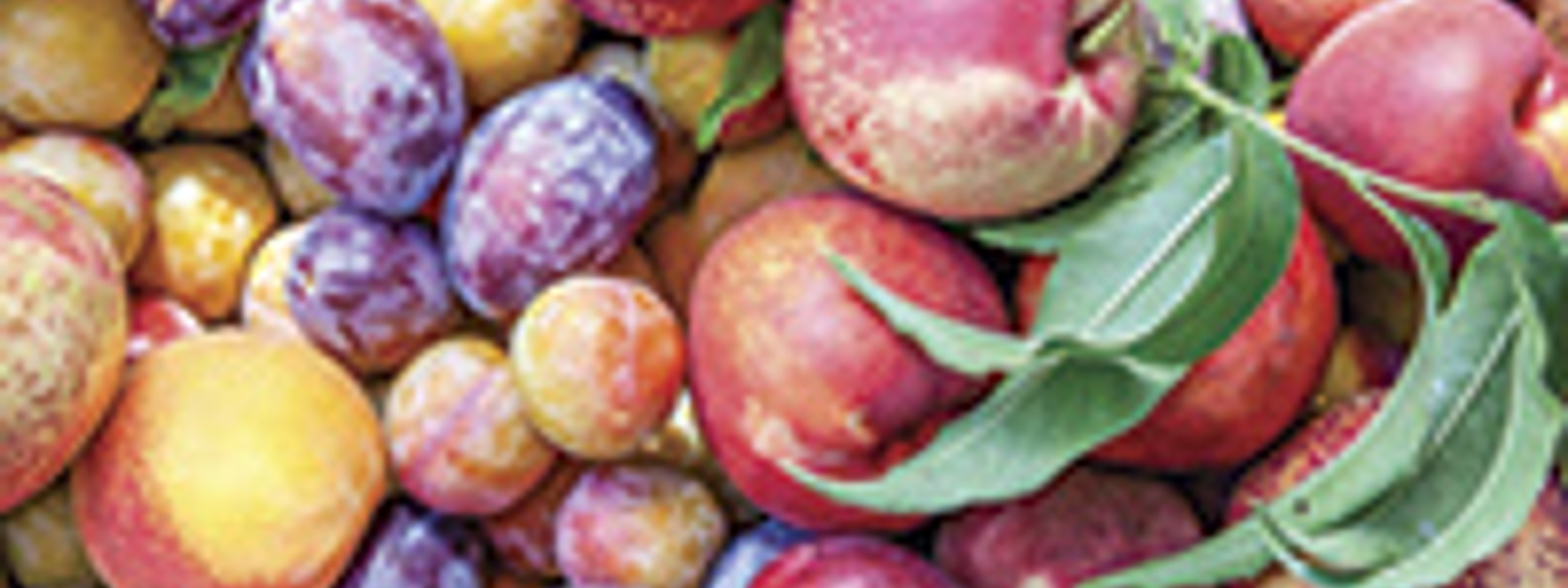
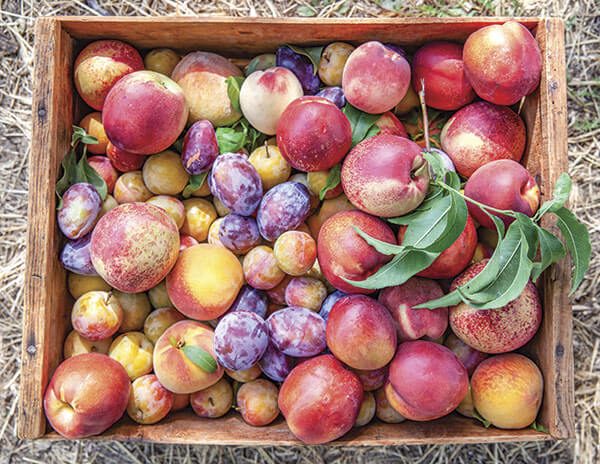
The Bera family grows nearly 70 varieties of heirloom stone fruit on their ranch in Winters. Photo: © 2020 Lori Eanes
Listening to Michele Bera talk about being a farmer of heirloom stone fruit, it's hard to tell what she loves most: scouting the rare varieties that thrive in her family's orchards, informing her customers about each fruit's heritage, or witnessing those customers' joy as they discover the sweet differences among the many varieties of heirloom peaches, plums, nectarines and apricots she brings to farmers markets.
"It's fun to research each unique variety, and sometimes I'll contact nurseries all over the world to find a source. You just don't see a lot of these fruits anymore," Bera said.
"I like bringing them to farmers markets because people are interested in trying unique things that they can't find in grocery stores. I'll tell them a bit about the fruit's history and when they try it, they fall in love with it," she said.
When the Bera family planted their orchards near the western Sacramento Valley town of Winters more than 25 years ago, their goal was to be different.

Michele Bera has helped introduce a new generation of food lovers to tree-ripened fruits such as those that might have grown in their grandparents' backyards. Photo: © 2020 Lori Eanes
"We decided years ago to go against the grain," said Michele's husband, Frank, who heads the farming details with his father, Frank Sr. "We began planting older, less commercially viable varieties—really planting for flavor, taste and quality."
He was familiar with many of the 50- to 100-year-old heirloom varieties because he grew up farming them on his father's ranch in nearby Vacaville. Still, many of the trees on his 15-acre property have been planted using a trial-and-error method.
"We didn't call nurseries and ask them for the really cool varieties. We did the opposite. We asked for stuff that people don't grow, things that are hard to grow and don't produce much, and things that don't have the shelf life that you might find in a modern variety," he said.

Harvest at Bera Ranch typically begins in late May and winds down by the end of September, according to Frank Bera. Photo: © 2020 Lori Eanes
Old-time favorites
Some fruit grown on the ranch have roots that go back more than 100 years, which classifies them as vintage varieties.
The satisfaction of this family's farming venture stems from knowing they are delivering tree-ripened flavors and qualities that remind people of fruit picked from their grandparents' backyard. They're introducing old-time favorites to a new generation of foodies.
Frank Bera concedes that farming heritage fruit "takes a lot of effort, and sometimes a lot of heartbreak. These varieties are more sensitive than many commercial varieties."
Typically, the Beras plant five to 10 trees to see how a newly chosen variety grows. It usually takes at least five to seven years of pampering for the trees to produce enough fruit to bring to market. Currently, they grow nearly 70 varieties of stone fruit, which extends the ranch's harvest season and ensures plenty of different offerings at each week's market.
"Depending on the fruit's marketability and demand, we'll decide whether to plant more of the same trees," said Michele Bera, whose responsibilities include locating nursery sources and selling the fruit at farmers markets. "We learn by doing."
Demand has continued to grow in the last several years, with many customers pre-ordering their favorite stone fruit by the case or wasting no time to approach Bera as she sets up her farmers market display. Some customers are poised to purchase their most-loved summer varieties at the first sign of their short harvest, knowing availability is limited.
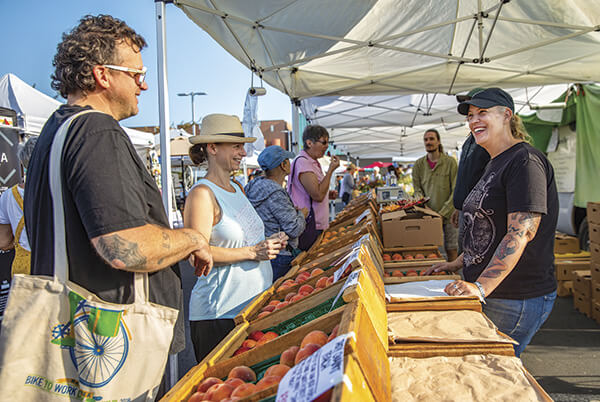
Bera Ranch has earned an enthusiastic following at farmers markets, where customers know the seasons are short and quantities are limited. Michele Bera, right, makes it a point to talk with customers about the prized heirloom fruit. Photo: © 2020 Lori Eanes
Talks at the market
Bera and her fruit have been popular at the Napa Farmers Market for 25 years—partly because these unusual varieties herald some of the most delicious signs of summer, and also because Bera takes such pride in sharing them.
Even before she began harvesting fruit in late May, Bera tried imagining how the market scene would feel this year with social distancing guidelines. She knew it would change the way people enjoyed gathering around for samples, sharing a hug and stopping to chat.
"The experience is different, but as a farmer, we need to treat this like any other season. You can't stop," she said. "I've been fortunate to have a loyal following of people who love the fruit we grow. I'm grateful that they'll still come out to support me—and vice versa."
One thing that hasn't changed: She still takes time to passionately describe the many varieties of fruit she displays in old-fashioned wooden lugs, each labeled with a sign indicating its history, characteristics and uses.
"People enjoy learning about the fruit," Bera said. "Part of my job as a farmer is to educate."
She'll tell you about luxuriously sweet Green Gage plums, which can be traced back to 15th-century Europe. Bera also offers the history of nickel-sized Damson plums, used to dye clothes purple during Roman times, and which Bera says make "the best preserves you'll ever eat."
She's delighted to share heirloom Heavenly White nectarines, describing their "knock-your-socks-off" high acid/sugar balance, as well as sweet and aromatic Strawberry Free white peaches.
Bera's green-tinted Blenheim apricots have developed a cult following among customers at the Napa and St. Helena farmers markets. There aren't many people growing Blenheims in California. "I have a hard time fulfilling the demand for them," she said. Also called Royals, these delicate French apricots ripen from the inside out.
"Some of these older varieties are quite fragile and have a limited shelf life, so we'll lose some of the fruit. We'd rather take a small loss if it means having something unique and different," she said.
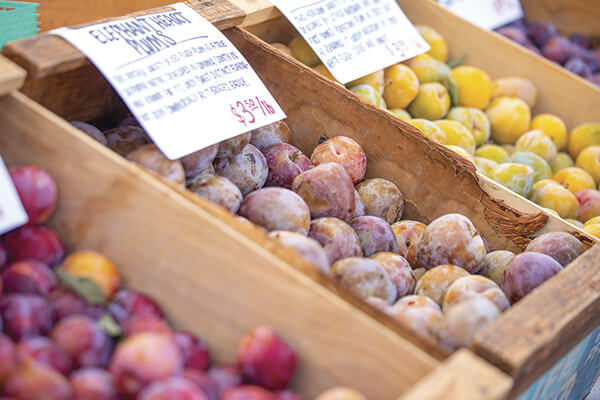
Each variety of fruit grown at Bera Ranch has a story to tell. Photo: © 2020 Lori Eanes
Loyal customers
Emma Lipp, owner and chef at Valley restaurant in Sonoma, has traveled from her Sonoma home to Bera's Napa market stand every Saturday for many summers.
"I buy as much and as many different kinds of fruit that Michele has," Lipp said. "We serve the fruit just as it is: delicious, fresh, beautiful stone fruit."
Longtime customer John Bisetti said Bera Ranch has "the most beautiful plums and peaches that I've ever seen anywhere in the world. They're beautiful in terms of their taste and color. I eat them fresh all day long—for snacks and breakfast."
Customer Mikey Kelly called Bera's stone fruit "amazing," adding, "I stack them up in rows on my countertop and let them ripen. I get made fun of by my family for it. I'm obsessed. It's an addiction."
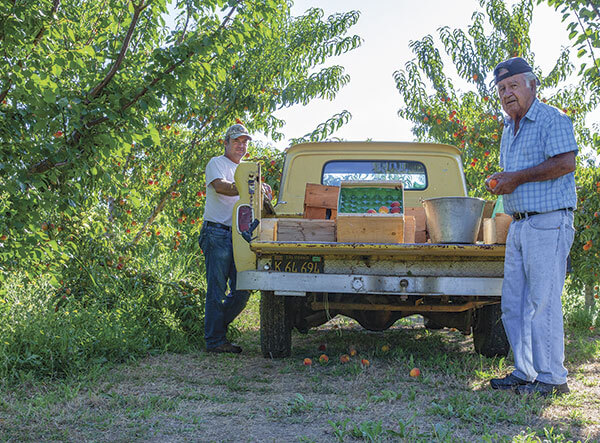
Heirloom fruit grown on the 15-acre Bera Ranch is handpicked and packed by three family members, including 81-year-old Frank Bera Sr., right, and son Frank. Photo: © 2020 Lori Eanes
A family harvest
Harvest time at Bera Ranch is a family affair. Frank, Michele and Frank Sr. harvest and pack all of their fruit the old-fashioned way—by hand, using ladders, metal buckets and vintage wooden lugs.
"My 81-year-old father-in-law can pick 20 boxes of peaches in no time, and not break a sweat," Bera said.
Their harvest begins in late May with an early freestone peach called Springcrest. In midsummer, the Bera market stand features more than 10 varieties of both white and yellow heirloom peaches and nectarines and a wide variety of plums.
"One year I had 17 varieties of plums at one time," she said with a laugh.
Harvest winds down by the end of September with late-season peaches such as Carnival, Fairtime and Summerset.
The senior Frank Bera puts the family's farming life into simple terms: "Michele tells us what she wants. We produce it. She sells it," he said.
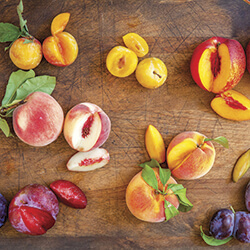
Photo: © 2020 Lori Eanes
What's an heirloom fruit?
Although there are different interpretations of what qualifies as "heirloom fruit," these treasured varieties generally have a historical or cultural significance that's been passed down through generations. Some heirlooms are hundreds of years old with international pedigrees, but most are 50 to 100 years old. They are prized for their intensity of flavors and aromas, and can be recognized for a lack of uniformity when it comes to shapes, sizes and colors.
Heirloom varieties lost their broad appeal following World War II, when plant breeders began introducing fruit and vegetable hybrids for a changing marketplace.
The current popularity and continuing existence of heirloom varieties can be credited to small farmers and home gardeners who have preserved them, often through experimentation. Heirlooms are generally grown on a small scale by farmers who plant and harvest them by hand. Many grocery stores have recently begun carrying heirloom varieties, but you're most likely to find heirlooms at farmers markets or farm stands.

